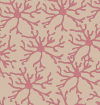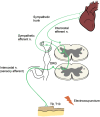Nociceptors: Their Role in Body's Defenses, Tissue Specific Variations and Anatomical Update
- PMID: 35392632
- PMCID: PMC8982820
- DOI: 10.2147/JPR.S348324
Nociceptors: Their Role in Body's Defenses, Tissue Specific Variations and Anatomical Update
Abstract
The human body is constantly under the influence of numerous pathological factors: both external and internal. These factors can be potentially harmful and are perceived as such with a specialized nervous system subunit: the nociceptive system. The functional unit of the nociceptive system is the nociceptor. Recent studies have shown that nociceptors play a crucial role in maintaining of defensive homeostasis (responsive, immune, behavioral). Nociceptors respond to potentially harmful stimuli within viscera, bones, muscles, skin and specialized sensory organs. They function as complex predictors of harm through formation of pain stimulus. Their function and structures vary within different tissues. This variability reflects the anatomical and pathological peculiarities of varying tissues. Nociceptors play a significant role in adaptive, protective and behavioral reactions. Their functional capabilities and vast spread throughout the body make them the main units of the body's defense system, allowing us to interact with the inner and outer environments.
Keywords: defensive homeostasis; nociceptors; pain perception; tissue specific variability.
© 2022 Nikolenko et al.
Conflict of interest statement
The authors declare no conflicts of interest in this work.
Figures







Similar articles
-
[What is a nociceptor?].Anaesthesist. 1997 Feb;46(2):142-53. doi: 10.1007/s001010050384. Anaesthesist. 1997. PMID: 9133176 Review. German.
-
[Pathophysiology of low back pain and the transition to the chronic state - experimental data and new concepts].Schmerz. 2001 Dec;15(6):413-7. doi: 10.1007/s004820100002. Schmerz. 2001. PMID: 11793144 German.
-
Nociceptors--noxious stimulus detectors.Neuron. 2007 Aug 2;55(3):353-64. doi: 10.1016/j.neuron.2007.07.016. Neuron. 2007. PMID: 17678850 Review.
-
Regulation of pain by neuro-immune interactions between macrophages and nociceptor sensory neurons.Curr Opin Neurobiol. 2020 Jun;62:17-25. doi: 10.1016/j.conb.2019.11.006. Epub 2019 Dec 3. Curr Opin Neurobiol. 2020. PMID: 31809997 Free PMC article. Review.
-
Heterogeneity in primary nociceptive neurons: from molecules to pathology.Arch Pharm Res. 2010 Oct;33(10):1489-507. doi: 10.1007/s12272-010-1003-x. Epub 2010 Oct 30. Arch Pharm Res. 2010. PMID: 21052929 Review.
Cited by
-
Expression patterns of mechanosensitive ion channel PIEZOs in irreversible pulpitis.BMC Oral Health. 2024 Apr 16;24(1):465. doi: 10.1186/s12903-024-04209-6. BMC Oral Health. 2024. PMID: 38627713 Free PMC article.
-
The Role of the Thalamus in Nociception: Important but Forgotten.Brain Sci. 2024 Jul 25;14(8):741. doi: 10.3390/brainsci14080741. Brain Sci. 2024. PMID: 39199436 Free PMC article. Review.
-
Role of ncRNAs in the Development of Chronic Pain.Noncoding RNA. 2025 Jul 3;11(4):51. doi: 10.3390/ncrna11040051. Noncoding RNA. 2025. PMID: 40700093 Free PMC article. Review.
-
Moving in pain - A preliminary study evaluating the immediate effects of experimental knee pain on locomotor biomechanics.PLoS One. 2024 Jun 28;19(6):e0302752. doi: 10.1371/journal.pone.0302752. eCollection 2024. PLoS One. 2024. PMID: 38941337 Free PMC article.
-
The Role of TNF-α in Neuropathic Pain: An Immunotherapeutic Perspective.Life (Basel). 2025 May 14;15(5):785. doi: 10.3390/life15050785. Life (Basel). 2025. PMID: 40430212 Free PMC article. Review.
References
-
- Hudspith MJ. Anatomy, physiology and pharmacology of pain. Anaesth Intensive Care Med. 2019;17(9):425–430.
-
- Vardeh D, Naranjo JF. Anatomy and physiology: mechanisms of nociceptive transmission. In: Pain Medicine. Cham: Springer; 2017:3–5.
-
- Ringkamp M, Dougherty PM, Raja SN. Anatomy and physiology of the pain signaling process. In: Essentials of Pain Medicine. Elsevier; 2018:3–10.
Publication types
LinkOut - more resources
Full Text Sources

